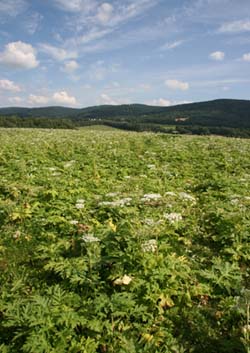Using AI to control energy for indoor agriculture
30 September 2024
Published online 19 August 2015
A unique database shows that non-native plant species originate largely from the northern hemisphere.

It’s the first robust assessment of global patterns of naturalization of plant species.
More than 13,000 species of vascular plants (plants that contain tissue that conducts water, minerals and waste products)—4% of the world’s total—that are now naturally growing in different regions actually originated elsewhere. Europe and temperate Asia were found to be the largest donors of plant species and North America was the largest recipient, while the Pacific Islands show the fastest increase in species numbers with respect to their land area.
“Although this was not a surprise, we could show that the number of naturalized alien plants from Europe is almost four times higher than one would expect based on the size of the European flora,” says ecologist Mark van Kleunen from Germany’s University of Konstanz.
The study also shows that the majority of exotic plants in Middle Eastern countries came from parts of Europe, Africa and North America, says King Saud University plant taxonomist Jacob Thomas, a contributor to the study.
The database was compiled in four years, but it still lacks data for about 20% of the Earth’s land surface, including large parts of the Middle East. The team plans to update the database to cover these areas.
They also want to deepen their understanding of the factors that contribute to the spread of alien plant species, which plant characteristics foster their spread into different environments, and how important evolutionary relationships are between naturalized and native plants.
doi:10.1038/nmiddleeast.2015.142
Stay connected: